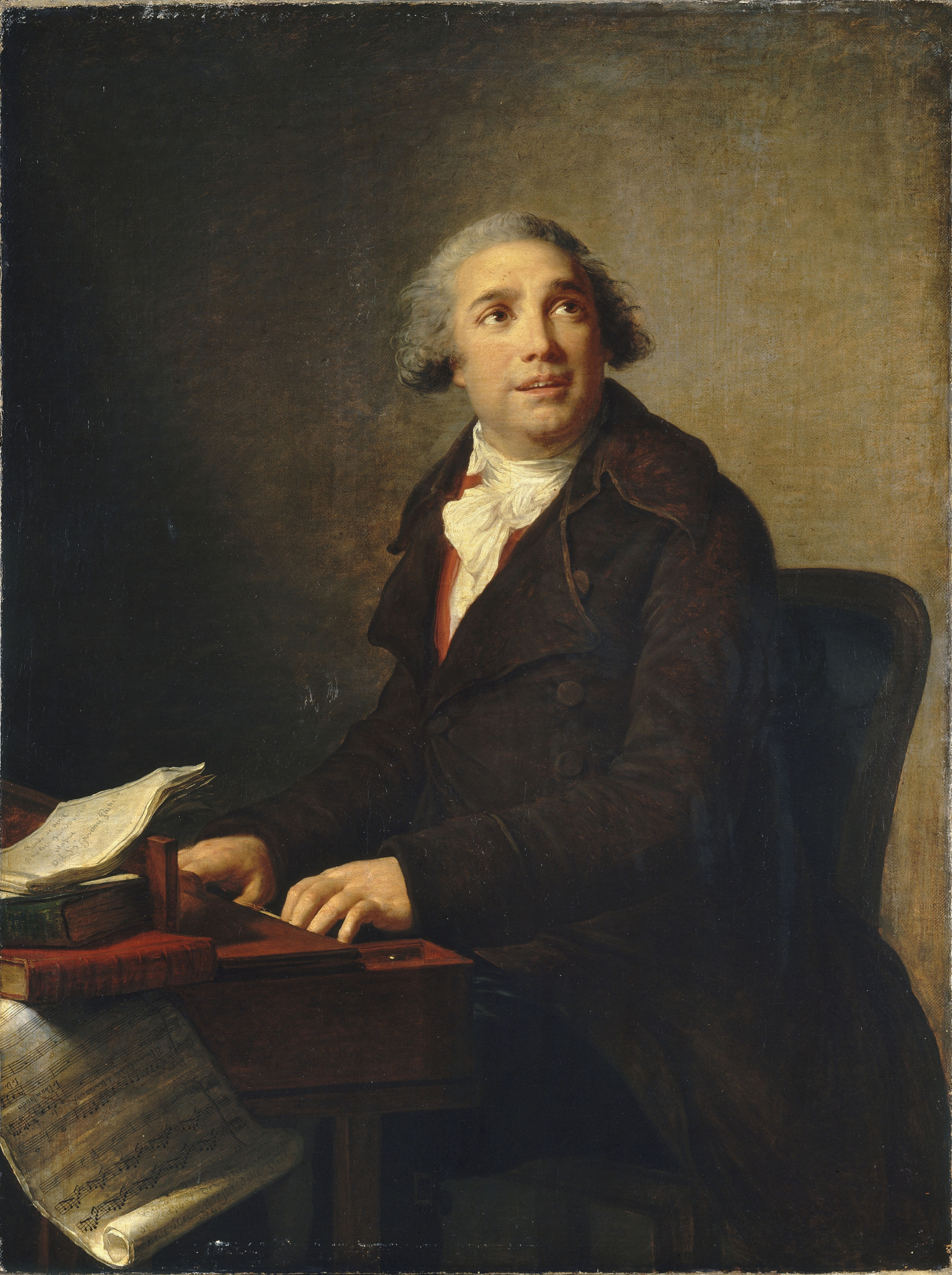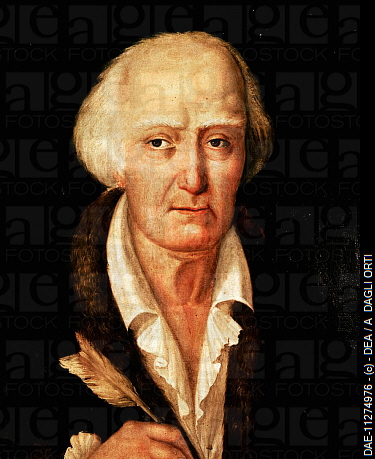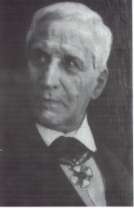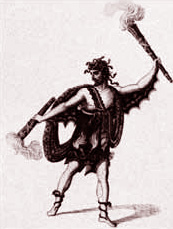|
Luigi Capotorti
Luigi Capotorti (17 March 1767 – 17 November 1842) was an Italian composer of both sacred and secular music. He was the ''maestro di cappella'' of several Neapolitan churches; the composer of ten operas, five of which premiered at the Teatro San Carlo in Naples; and a teacher of composition and singing whose students included Stefano Pavesi and Saverio Mercadante. Born in Molfetta, he studied violin and composition at the Conservatorio di Sant'Onofrio in Naples and spent his entire career in that city. In his later years, Capotorti retired to San Severo, where he died at the age of 75. Life Capotorti was born in the southern Italian town of Molfetta the son of Maria ''née'' Berardi and Michelangelo Capotorti. He showed an early talent as a violinist and at the age of 12 was hired by the town's cathedral to play whenever the Eucharist was carried outside. In 1783 his father enrolled him in the Conservatorio di Sant'Onofrio in Naples where he studied violin under Michele Nasci ... [...More Info...] [...Related Items...] OR: [Wikipedia] [Google] [Baidu] |
Molfetta
Molfetta (; Molfettese: ) is a town located in the northern side of the Metropolitan City of Bari, Apulia, southern Italy. It has a well restored old city, and its own dialect. History The earliest local signs of permanent habitation are at the Neolithic site of Pulo, one of the most important such sites in southern Italy. The origins of the city can be traced to a small fishing port; antique graves testify to a fisherman's village in the fourth century BC. The position of the future city offered a valid landing to the commerce of Roman Rubo. The first indication of a toponym on the coast between ''Turenum'' ( Trani) and ''Natiolum'' (Giovinazzo) is in the '' Itinerarium Provinciarum Antonini Augusti'', edited from a third-century core. The place denominated ''Respa'' was probably a wrong transcript of the toponym ''Melpha'', referring to a small village of fishermen. The first official document that mentions the city dates to November 925; it documents a ''civitas'' denom ... [...More Info...] [...Related Items...] OR: [Wikipedia] [Google] [Baidu] |
Name Day
In Christianity, a name day is a tradition in many countries of Europe and the Americas, among other parts of Christendom. It consists of celebrating a day of the year that is associated with one's baptismal name, which is normatively that of a biblical character or other saint. Where they are popular, individuals celebrate both their name day and their birthday in a given year. The custom originated with the Christian calendar of saints: believers named after a saint would celebrate that saint's feast day. Within Christianity, name days have greater resonance in areas where the Christian denominations of Catholicism, Lutheranism and Orthodoxy predominate. In some countries, however, name-day celebrations do not have a connection to explicitly Christian traditions. History The celebration of name days has been a tradition in Catholic and Eastern Orthodox countries since the Middle Ages, and has also continued in some measure in countries, such as the Scandinavian count ... [...More Info...] [...Related Items...] OR: [Wikipedia] [Google] [Baidu] |
Fedele Fenaroli
Fedele Fenaroli (25 April 1730, in Lanciano – 1 January 1818, in Naples) was an Italian composer and teacher. Fenaroli entered the Conservatorio di Santa Maria di Loreto, one of the Music conservatories of Naples, becoming a pupil of Francesco Durante. In 1762 he was appointed Maestro di Cappella. Among his students were many celebrated Italian composers, such as Domenico Cimarosa, Nicola Antonio Zingarelli Nicola may refer to: People * Nicola (name), including a list of people with the given name or, less commonly, the surname **Nicola (artist) or Nicoleta Alexandru, singer who represented Romania at the 2003 Eurovision Song Contest * Nicola people ..., and Saverio Mercadante. Giuseppe Verdi was a second-generation student, as his teacher, Vincenzo Lavigna, was a student of Fenaroli. Fenaroli wrote several treatises on music, which were widely used during the nineteenth century. As a composer, he wrote mainly sacred music. 1730 births 1818 deaths People from Lanci ... [...More Info...] [...Related Items...] OR: [Wikipedia] [Google] [Baidu] |
Giovanni Paisiello
Giovanni Paisiello (or Paesiello; 9 May 1740 – 5 June 1816) was an Italian composer of the Classical era, and was the most popular opera composer of the late 1700s. His operatic style influenced Mozart and Rossini. Life Paisiello was born in Taranto in the Apulia region and educated by the Jesuits there. He became known for his beautiful singing voice and in 1754 was sent to the Conservatorio di S. Onofrio at Naples, where he studied under Francesco Durante, and eventually became assistant master. For the theatre of the Conservatorio, which he left in 1763, he wrote some intermezzi, one of which attracted so much notice that he was invited to write two operas, ''La Pupilla'' and ''Il Mondo al Rovescio'', for Bologna, and a third, ''Il Marchese di Tidipano'', for Rome. His reputation now firmly established, he settled for some years at Naples, where, despite the popularity of Niccolò Piccinni, Domenico Cimarosa and Pietro Guglielmi, of whose triumphs he was bitterly jealous, ... [...More Info...] [...Related Items...] OR: [Wikipedia] [Google] [Baidu] |
Giacomo Tritto
Giacomo Domenico Mario Antonio Pasquale Giuseppe Tritto (2 April 1733 – 16 September 1824) was an Italian composer, known primarily for his fifty-four operas. He was born in Altamura, and studied in Naples; among his teachers were Nicola Fago, Girolamo Abos, and Pasquale Cafaro. Amongst his pupils were the young Vincenzo Bellini around 1821, plus Ferdinando Orlandi. He died in Naples. Operas *''Le nozze contrastate'' (opera buffa, 1754, Naples) *''La fedeltà in amore'' (opera buffa, libretto by Francesco Cerlone, 1764, Naples) *''Li furbi'' (intermezzo, 1765, Naples) *''Il principe riconosciuto'' (opera buffa, libretto by Francesco Cerlone, 1780, Naples) *''La francese di spirito o La viaggiatrice di spirito'' (opera buffa, libretto by G. M. Mililotti, 1781, Rome) *''La Bellinda o L'ortolana fedele'' (opera buffa, libretto by Francesco Cerlone, 1781, Naples) *''Don Procopio in corte del Pretejanni'' (opera buffa, 1782, Naples) *''Don Papirio'' (opera buffa, libretto b ... [...More Info...] [...Related Items...] OR: [Wikipedia] [Google] [Baidu] |
Francesco Florimo
Francesco Florimo (12 October 1800 – 18 December 1888) was an Italian librarian, musicologist, historian of music, and composer.Libby, Dennis; Rosselli, John. "Florimo, Francesco" in Sadie 2001. Early life and friendship with Bellini Florimo was born in San Giorgio Morgeto in Calabria and enrolled at the age of 12 (or 15) at the Naples Conservatory (Conservatorio di San Pietro a Majella). There he studied with Nicola Antonio Zingarelli and Giacomo Tritto and met Vincenzo Bellini, a student companion who became a lifelong friend and the recipient of Florimo's fervent devotion. Florimo later dedicated several works to Bellini, including his ''Traslazione delle ceneri di Vincenzo Bellini: memorie e impressioni'', (Naples, 1876) and ''Bellini: memorie e lettere'' (Florence 1882). This material contains much that is important and indispensable, but some of the letters were partially or entirely fabricated, and several of Florimo's more dubious claims were based on 'remembered conve ... [...More Info...] [...Related Items...] OR: [Wikipedia] [Google] [Baidu] |
Sacred Music
Religious music (also sacred music) is a type of music that is performed or composed for religious use or through religious influence. It may overlap with ritual music, which is music, sacred or not, performed or composed for or as ritual. Religious songs have been described as a source of strength, as well as a means of easing pain, improving one's mood, and assisting in the discovery of meaning in one's suffering. While style and genre vary broadly across traditions, religious groups still share a variety of musical practices and techniques. Religious music takes on many forms and varies throughout cultures. Religions such as Islam, Judaism, and Sinism demonstrate this, splitting off into different forms and styles of music that depend on varying religious practices. Religious music across cultures depicts its use of similar instruments, used in accordance to create these melodies. drums (and drumming), for example, is seen commonly in numerous religions such as Rastafari and ... [...More Info...] [...Related Items...] OR: [Wikipedia] [Google] [Baidu] |
Santa Teresa Degli Scalzi
Santa Teresa degli Scalzi (previously known as the church of Santa Teresa al Museo, or of Santa Teresa agli studi or della Madre di Dio) is a church in Naples, Italy, located in via Santa Teresa degli Scalzi, a wide street opened during 1806–1810, to connect the historic center of Naples to the zone of Capodimonte. The church is generally closed to the public. Church construction began in 1604 and the church was consecrated in 1612 under the Order of Discalced Carmelites thanks to the donations obtained by the Spanish Carmelite follower of St Teresa of Avila, the preacher Pietro della Madre di Dio. Exterior Construction of the church and convent were directed by Giovan Giacomo di Conforto, while Cosimo Fanzago in 1652 designed the facade with its two stucco statues of Saint Teresa d'Avila and St John of the Cross. In 1835, a ramp needed to be built when the street level was lowered. The interior is a Latin cross plan with a single nave; in the chapel are conserved works by ... [...More Info...] [...Related Items...] OR: [Wikipedia] [Google] [Baidu] |
Santa Maria Della Sanità, Naples
The Basilica of Santa Maria della Sanità is a basilica church located over the Catacombs of San Gaudioso, on a Piazza near where Via Sanità meets Via Teresa degli Scalzi, in the Rione of the Sanità, in Naples, Italy. The church is also called San Vincenzo or San Vincenzo della Sanità, due to the cult of an icon of San Vincenzo Ferrer, also called locally O' Monacone (the big monk). History The church was originally attached to a Dominican monastery founded in 1577. The church was built in a centralized Greek-cross plan from 1602 to 1613 using the architectural designs of Giuseppe Nuvolo. The main altar is elevated and accessed via flanking Baroque-style spiraling staircases, all sheathed in polychrome marble. The entrance to the crypt or catacombs is beneath the altar, which was elevated above the site of the original chapel at the site. On the left of the nave is an elevated polychrome marble pulpit, designed by Dionisi Lazzari. The crypt, once site of a paleochri ... [...More Info...] [...Related Items...] OR: [Wikipedia] [Google] [Baidu] |
San Domenico Maggiore
San Domenico Maggiore is a Gothic, Roman Catholic church and monastery, founded by the friars of the Dominican Order, and located in the square of the same name in the historic center of Naples. History The square is bordered by a street/alleyway popularly called " Spaccanapoli" (presently labeled via Benedetto Croce at this particular section of its considerable length) in the historic center of Naples. It was one of the three main east–west streets of the original Greek city of ''Neapolis''. To the east along Spaccanapoli, one reaches in a few blocks the Piazza of Gesu Nuovo and Santa Chiara. The Church of San Domenico Maggiore incorporates a smaller, original church built on this site in the 10th century, ''San Michele Arcangelo a Morfisa''. Charles II of Naples began the rebuilding that produced the Gotico Angioiano structure that comprises the present church. The work was done between 1283 and 1324, but the church has undergone modifications over the centuries, incl ... [...More Info...] [...Related Items...] OR: [Wikipedia] [Google] [Baidu] |
Andrea Nozzari
Andrea Nozzari (27 February 1776 – 12 December 1832) was an Italian tenor. Nozzari was born in Vertova and studied in Bergamo and Rome. He is notable for the principal roles written for him by Gioachino Rossini and mostly premiered in Domenico Barbaia's theatres in Naples. These were: *Leicester in ''Elisabetta, regina d'Inghilterra'' (1815) *Otello in ''Otello'' (1816) *Rinaldo in ''Armida'' (1817) *Osiride in ''Mosè in Egitto'' (1818) *Agorante in '' Ricciardo e Zoraide'' (1818) *Pirro in ''Ermione'' (1819) *Rodrigo in ''La donna del lago'' (1819) *Paolo Erisso in ''Maometto II'' (1820) *Antenore in '' Zelmira'' (1822) He also premièred the title roles in Giovanni Pacini's '' Alessandro nelle Indie'' (1824) and Donizetti's '' Alfredo il grande'', and roles in operas by Michele Carafa, Manuel García, Johann Simon Mayr, Saverio Mercadante, Nicola Antonio Manfroce and Stefano Pavesi. Nozzari's voice had a baritonal quality, and his intense acting was much valued ... [...More Info...] [...Related Items...] OR: [Wikipedia] [Google] [Baidu] |






